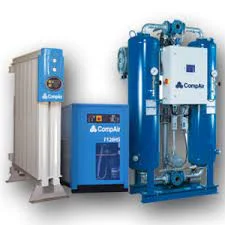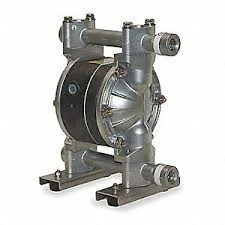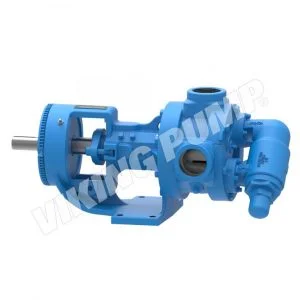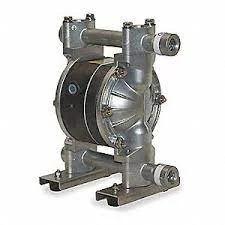 How it Get In & How We Get it Out
How it Get In & How We Get it OutCompressed air is a simple tool but with complex issues. Air can be compressed and used to make jobs easier by moving product such as sugar, applying paint, or in tools for a shop. The complexity is the process which air goes through before it is used.
Air is normally spread out with minimum pressure and temperature while having a large volume. When air goes through a compressor the pressure is increased and the volume drops drastically. Temperature is increased greatly through kinetic friction between the molecules being pressed into a small volume. To explain take a gander at the ideal gas law.
The gas constant, R will remain the same since air is the only substance being examined. Newton’s Third Law states that for every reaction there is an equal and opposite reaction.
As the pressure increases, due to the compressor, the temperature also rises. The volume is decreased through the compression process and normally having the number of molecules, n, stay the same but in a small volume would change the state of the air to a condensate or liquid form but the temperature is so high that the air remains in a gaseous form.
When the air is released into a receiver or into the pipeline the temperature will gradually decrease and that is when the gaseous air begins to change and condensate/water is introduced into your compressed air system.
 Using an ARO Diaphragm Pump for Powders
Using an ARO Diaphragm Pump for PowdersWe have a customer who does custom chemical mixing for pesticide and herbicide manufacturers. The additives used to produce these products come in both powder and liquid form. Usually the ingredients are mixed with water in large mixing tanks. The product is then moved to a smaller tank that is used as a day tank in filling the customer’s containers. They are usually one gallon and five gallon plastic bottles.
The particular product that was causing problems being mixed had a component that was very light and fluffy. They had tried different methods of moving the ingredient to the mix tank but had problems with dusting and the product would actually foam or bubble out of the top of the mix tank. This was especially true with gravity feed.
The project engineer at the facility relayed these problems to me and I suggested that they try an ARO AOD powder pump. These pumps use regulated aeration ports to keep the product fluidized. The pump also had the optional suction probe which is perfect for moving product from super sacks.
ARO offered a test program for these to insure that the pump will move the product. Our customer found that the material was easily pumped once the proper pump adjustments were made. Since the pump discharge is into a hose it was easy for them to pipe it into the top of the tank. This eliminated their dusting problem and the foaming problem with the gravity fill.
We did these trials several months ago and I recently checked with the customer and they are very happy with the pump.
 Hydrocarbon Engineering Magazine Raves About Viking's New XPD 676 Pump
Hydrocarbon Engineering Magazine Raves About Viking's New XPD 676 PumpRefineries, petrochemical plants and their EPCs have had limited choices for positive displacement (PD) pumps that comply with API 676 design standards until recently. While many pumps claim to ‘meet the intent’ of the standard, or ‘comply, with exceptions’, Viking Pump has developed a new series of steel internal gear pumps that are engineered and manufactured to comply fully with all requirements of this critical standard. The XPD 676 Series offers capacities to 1600 GPM (360 m3/hr) on viscosities from 28 to 2 million SSU, with differential pressures to 200 psi (14 bar).
Some of the recent applications where Viking has recently provided API 676 compliant pumps include: hydrocarbon transfer (EU refinery), rail car unloading of crude oil (US refinery), processing rubber cement (ME petrochemical plant), fueling on offshore platforms (EU, Asia), and processing polyols (ME petrochemical plant). These projects help illustrate the variety of liquids and viscosities that Viking pumps can handle, from thin, high vapour pressure hydrocarbons (due to very low NPSHr), to extremely viscous polymer reactor discharge at very high temperatures (due to low shear with integral jacketing and the ability to adjust clearances for viscosity).
The API standard helps reduce the risk of handling hazardous or flammable hydrocarbons by ensuring the highest quality and reliability available in a pump. Some of the requirements of the standard include use of an API 682 compliant mechanical seal with minimum 25 000 hr (three year) design life, anti-friction bearings with minimum 25 000 hr L-10 life at operating conditions, additional 3 mm corrosion allowance on pressure containing parts over and above the maximum allowable casing pressure, extensive non-destructive evaluation (NDE) of steel castings and weld repairs, and much more. Together, these features that are not normally found on ‘manufacturer’s standard’ pumps ensure the ultimate in safety, by reducing chance of emissions, leakage or catastrophic failure. The standard maximizes reliability by requiring the best available components, and validates that reliability through NDE and certified hydrostatic and performance testing at the specified operating conditions. Due to the extreme robustness of the pumps, Viking provides a five year warranty on the XPD 676 Series.
 Air Operated Diaphragm Pumps for Dosing and Metering
Air Operated Diaphragm Pumps for Dosing and MeteringMany of my customers in north Georgia who produce coatings, printing inks and light weight chemicals and typically use air operated diaphragm pumps are always asking me what we can offer for metering, dosing or being able to remote operate their dispensing operations.
Most of these customers also use positive displacement gear pumps and after learning the initial purchase prices of a variable speed positive displacement with their limited capital budgets are looking for options.
IR ARO recently launched their new Electronic Interface EXP air operated diaphragm pumps that have solenoid control rather than an air valve assembly.
The electronic interface pumps can also be supplied with optional cycle counter to track end of stroke feedback and pump data. The PE electronic interface pumps allow maximum flow rates with minimum air consumption (on average 3%+ less). The PE pumps also have lube free design with fewer parts than the standard pump with the exclusion of the air valve assembly with inclusion of solenoid valve control.
Many of my customers have several AOD pumps in operation for their dispensing requirements that historically needs intensive manpower to operate equipment, and now ARO offers a multi-pump controller that communicates with the new ARO electronic interface pumps which eliminates intensive operating with remote operation and also provides safer control.
Let us schedule a survey of your existing pumps and how they are operated, pending metering or dosing requirements, and discuss how these new improved ARO pump controls can help.


